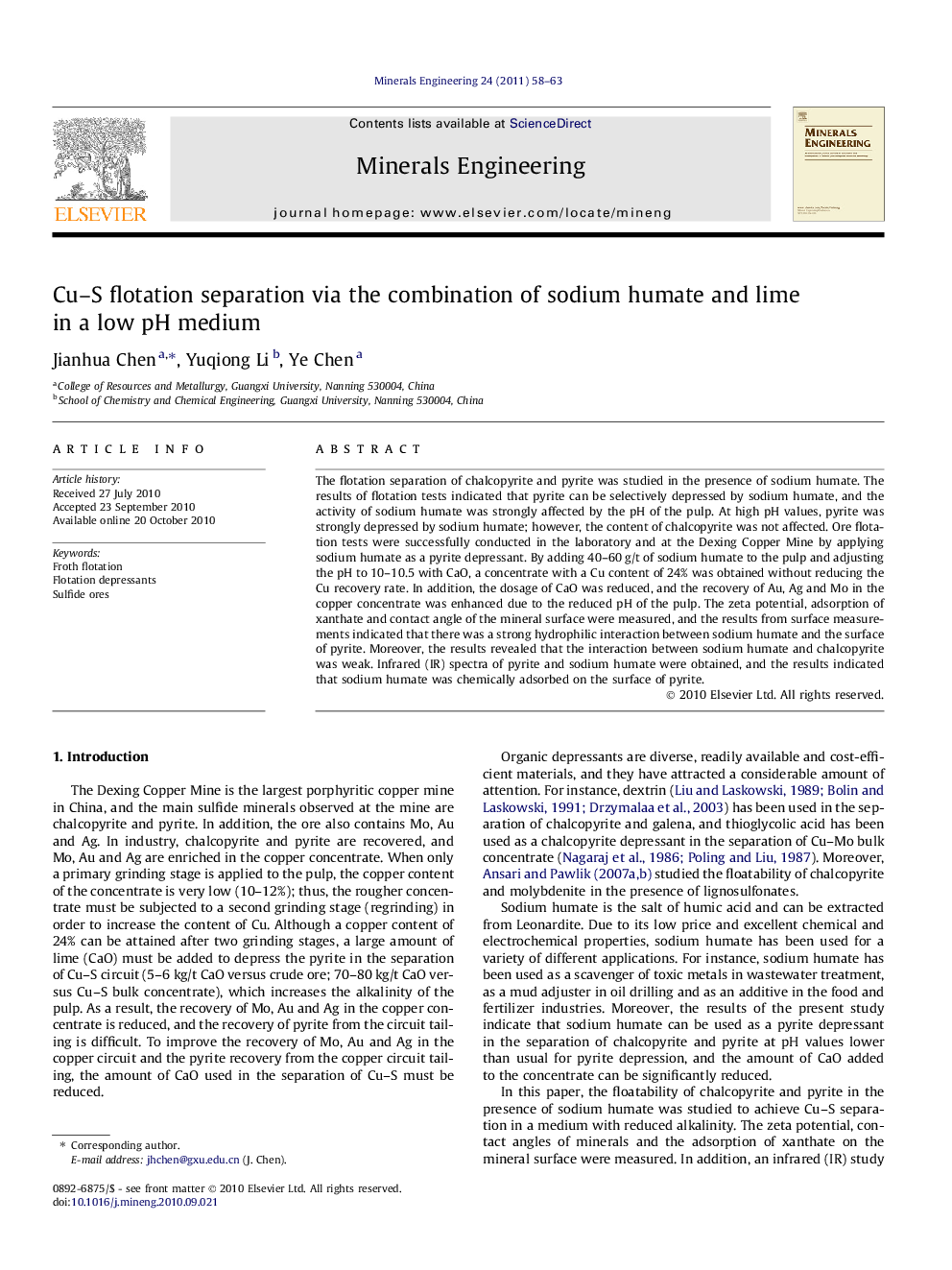| Article ID | Journal | Published Year | Pages | File Type |
|---|---|---|---|---|
| 234195 | Minerals Engineering | 2011 | 6 Pages |
The flotation separation of chalcopyrite and pyrite was studied in the presence of sodium humate. The results of flotation tests indicated that pyrite can be selectively depressed by sodium humate, and the activity of sodium humate was strongly affected by the pH of the pulp. At high pH values, pyrite was strongly depressed by sodium humate; however, the content of chalcopyrite was not affected. Ore flotation tests were successfully conducted in the laboratory and at the Dexing Copper Mine by applying sodium humate as a pyrite depressant. By adding 40–60 g/t of sodium humate to the pulp and adjusting the pH to 10–10.5 with CaO, a concentrate with a Cu content of 24% was obtained without reducing the Cu recovery rate. In addition, the dosage of CaO was reduced, and the recovery of Au, Ag and Mo in the copper concentrate was enhanced due to the reduced pH of the pulp. The zeta potential, adsorption of xanthate and contact angle of the mineral surface were measured, and the results from surface measurements indicated that there was a strong hydrophilic interaction between sodium humate and the surface of pyrite. Moreover, the results revealed that the interaction between sodium humate and chalcopyrite was weak. Infrared (IR) spectra of pyrite and sodium humate were obtained, and the results indicated that sodium humate was chemically adsorbed on the surface of pyrite.
Graphical abstractFigure optionsDownload full-size imageDownload as PowerPoint slideResearch highlights► Sodium humate can selectively depress the pyrite in the Cu-S flotation separation. ► The addition of sodium humate can reduce the dosage of lime (CaO) used. It is indicated that the lime addition was reduced from 5.14 kg/t (with no sodium humate) to 1.30 kg/t (with sodium humate addition of 52.35 g/t). In addition, the copper concentrate grade in the experiments increased from 15.6% in the absence of sodium humate to 24.5% in the presence of 80 g/t of sodium humate, and in trials a concentrate with a Cu content of 24% was obtained without reducing the Cu recovery rate. ► The hydrophobicity and the adsorption of xanthate on pyrite surface are decreased by the addition of sodium humate. ► Infrared (IR) spectrum study suggests that sodium humate is chemically adsorbed on pyrite surface.
